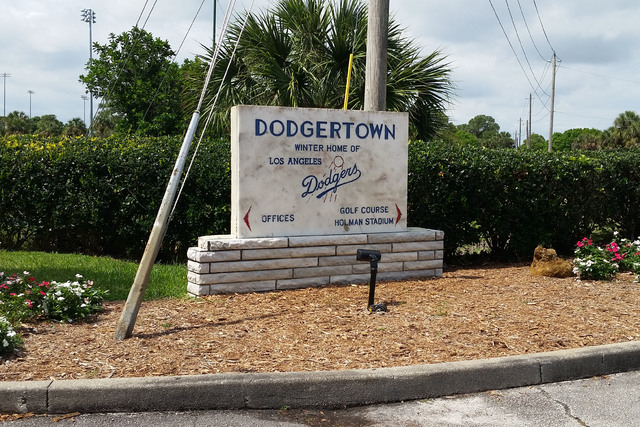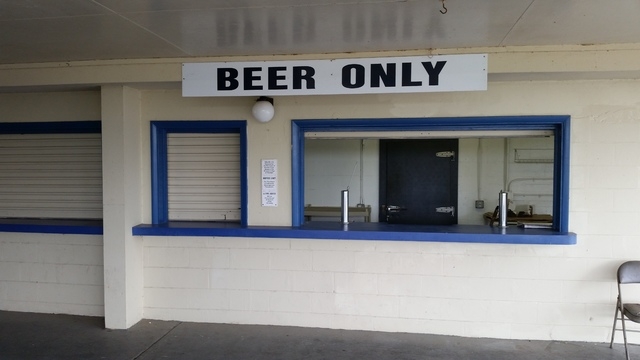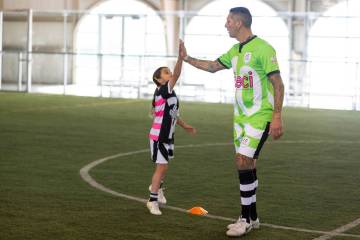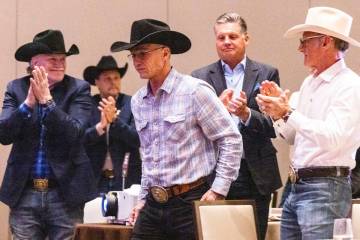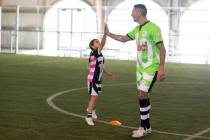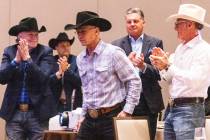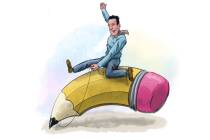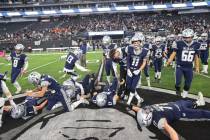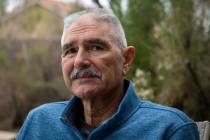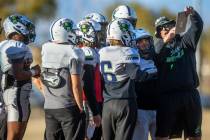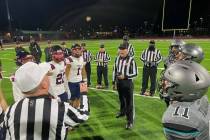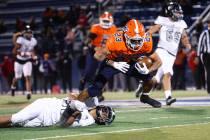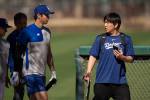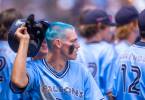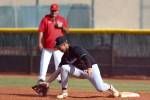Watching the baseball ghosts play pepper at Historic Dodgertown
The uniform was modern in appearance — scarlet jersey, Columbia blue lettering and numbers. A nondescript logo. “COLONIALS” it said on front.
One of those kids’ travel teams, we were told. Headed toward the old ballpark with the famous open-air dugouts on Florida’s Atlantic coast where so many memories were made.
But if you squinted from concourse level at Holman Stadium in Vero Beach, Florida, and let your mind wander — not as much as at the Field of Dreams in Iowa, but just a little — you could see the baseball ghosts playing pepper on the field below: Robinson, Campanella, Snider, Koufax, Pee Wee Reese.
If you squinted, you also didn’t see the rusted-out seats and the patches of worn grass and the old wood that was splintering. The weather and the years have taken a toll on the old ballpark.
But you can still almost smell the Dodger Dogs at Historic Dodgertown.
That’s what they call it now: Historic Dodgertown. Which it most certainly is. Which is why we turned off Interstate 95 on our way to the international airport in Orlando to see it. From 1948 until 2008, it was just Dodgertown, the quaint, self-contained spring training home of the Brooklyn and, later, the Los Angeles Dodgers.
When the Dodgers abandoned the converted Naval base for spiffy new spring training digs in Arizona, Dodgertown began to die a slow death. It was shut down and fell into disrepair.
Minor league baseball purchased it and tried to turn it into a training center. It was called the Vero Beach Sports Village then, but where’s the magic in that?
So when the Vero Beach Sports Village began to die a more rapid death, former Dodgers owner Peter O’Malley and his sister, Terry, stepped up to home plate. Along with former Dodgers pitchers Chan Ho Park and Hideo Nomo, they now form the Dodgertown management team, while the county is responsible for the upkeep of the place.
The Dodgers’ new owners allowed the old owners to use the team’s name. So Dodgertown is now called Historic Dodgertown. It has been designated a historic landmark. New fields have been built, to attract youth soccer and lacrosse and other sports.
At least now Historic Dodgertown doesn’t look as if it will become an industrial park anytime soon.
But the beer spigots at the old concession stand still could use some taps.
The New York Times sent a man down last season. Holman Stadium probably looked more manicured then. The St. Lucie Mets were playing the Brevard County Manatees in a Class A ballgame to commemorate Jackie Robinson Day. The Times’ story said Historic Dodgertown was “clawing its way toward solvency.”
From where we were standing, it appeared to be a slow claw.
Instead of the Dodgers vs. the Cardinals, or even the St. Lucie Mets vs. the Brevard County Manatees, it was the Colonials vs. some small Catholic school from Pittsburgh.
Jerry Reuss, the longtime Henderson resident who won 220 games in the big leagues, including 86 for the Dodgers, spent eight spring trainings in Dodgertown near the beach.
When the Dodgers released him and he was signed by Cincinnati, Reuss said Dodgertown still was very much a functional spring training facility.
It may not have offered bells and whistles like these new modern Grapefruit and Cactus League ballparks and training facilities that have sprung up to entice teams into packing up the equipment bag and leaving for a greener pasture — or in the case of the Dodgers, a dryer pasture in Arizona.
Reuss said it offered something more.
“Everywhere you stepped, something (memorable) had happened in that spot over the years since the Dodgers first went to Vero Beach in 1948,” he said.
Reuss, who emailed a picture of Holman Stadium as it appeared a couple of years ago when he participated in a fantasy camp there, said when the Dodgers’ airplane with the familiar logo on the fuselage would touch down on the landing strip adjacent to the practice diamonds, Vero Beach townspeople always would be there to greet and applaud the players.
You don’t get that when a team plane lands in Miami or Orlando or even West Palm Beach.
When we pulled up to the entrance to Historic Dodgertown, there were fresh flowers planted among bark chips. There seemed to be some life left in the old place, which mostly is used for travel team baseball tournaments, fantasy camps, umpire schools — and Montreal Alouettes minicamp.
(That’s right: a Canadian Football League team now uses the half-diamond on which Maury Wills perfected his hook slide to practice pass patterns, which would probably blow Carl Furillo’s mind.)
The youngster at the gate said it would be $5 to get in to watch the Colonials and their opponents play baseball. It was explained that we were from Las Vegas, and we had only come to Historic Dodgertown for the history, and to watch the baseball ghosts play pepper.
The youngster said “Oh, OK,” as if he gets that a lot. He let us drive right in.
Las Vegas Review-Journal sports columnist Ron Kantowski can be reached at rkantowski@reviewjournal.com or 702-383-0352. Follow him on Twitter: @ronkantowski



